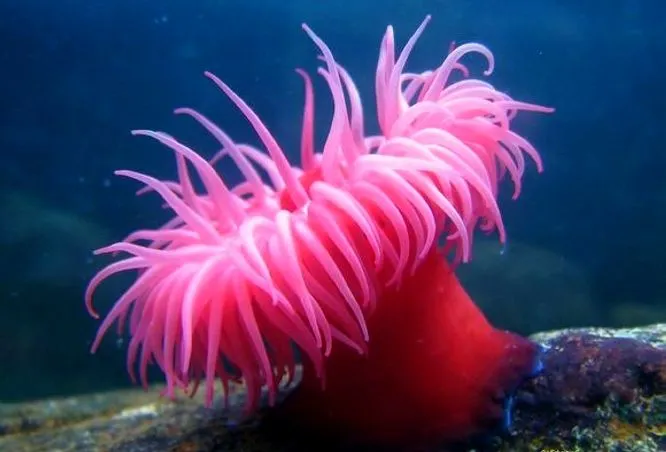At the depths of the seabed, a dazzling "flower" blooms, which slowly flutters with the current, like the petals of a sunflower that is blown up in the wind, attracting countless "animal tourists" to watch.
Just as these "tourists" were surrounding the dazzling petals to see what was going on, suddenly they all seemed to be unable to move as if they had been hit by magic.
Soon, the petals are gently closed, bringing the "tourist" into the flower. Soon after, when the petals opened again, all the "tourists" disappeared. So, what is this flower that is so terrible?
It turns out that these competing "flowers", called sea anemones, look like a weak flower, but are actually a coelenterate that feeds on animals in the water.
The bottom of the anemone's body is a base disc that can be firmly fixed on the reef, and the top of the body is the mouth, which is both an import for swallowing food and an outlet for excreting waste. Around the mouth grew many sunflower petal-like tentacles, and the tentacles were covered with barbs. This barb is able to secrete venom, paralyzing the animal.
With such predators, coupled with cleverly arranged predation traps, anemone predation is also handy.
Because the anemone could not swim as fast as other fish, it had to extend its two rows of radial tentacles in all directions, and these tentacles swung incessantly in the water, like a blooming sunflower, waving frequently to the curious little animals.
If there are small fish and shrimp swimming close, the tentacles will be stimulated, even if it is a gentle sweep, the anemone can accurately catch the victim in hand, then release venom to poison it, and then use the tentacles to send these delicacies into the mouth.
From this point of view, for small fish and shrimp, the gorgeous and moving appearance of the sea anemone is indeed a fatal trap.
Although the sensory organs of the anemone are primitive, they still have a certain ability to distinguish.
Scientists have found through experiments that when its tentacles touch a plastic shrimp placed artificially, it will immediately grab it, stay for a moment and then let it go.
This means that the nerve cells of the anemone are fine enough to tell themselves that plastic is not edible, thus saving the energy required to send the plastic shrimp to the digestive system and identify them there.
#奇妙的动物 #
